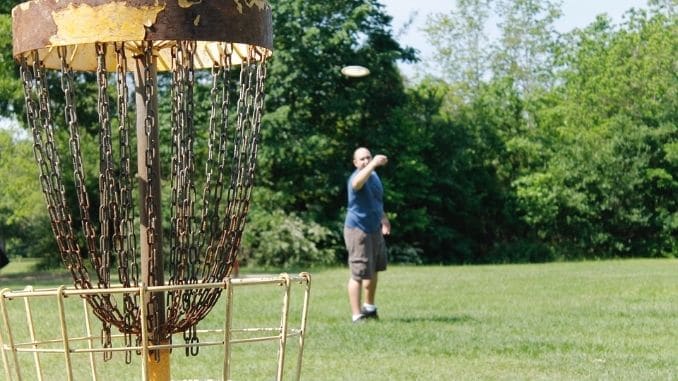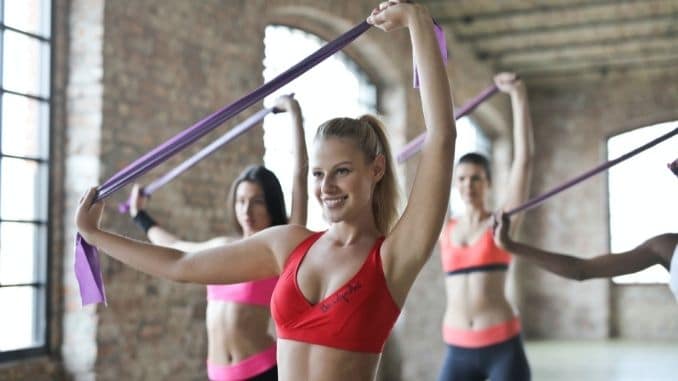
If you could choose only one thing to do to maintain your health and wellness, it should be exercised. Few things work as well to keep you young, active and feeling great as you age.
Finding a way to fit regular exercise into your life, however, is not always easy. According to a survey from DBI Furniture Solutions, almost half of the respondents were unable to fit exercise into their daily schedule.
According to a recent report from the Centers for Disease Control and Prevention, only 23 percent of 18- to 64-year-olds get the recommended 150 minutes of moderate aerobic activity (or 75 minutes of vigorous activity) and two sessions of strength training each week.
To protect your health, it’s vital to establish a fitness routine that you can stick with over the long term. Below are 10 tips to help you do that.
1. Think About Activities You Enjoy
This may be the most important thing you can do to establish a routine that will work for you. It doesn’t matter what anyone else is doing — you have to find a way to fit exercise into your life, and focusing on activities you enjoy is one way to ensure that your new routine will work.
Would you rather jog or bike? Play some racquetball or work with a dance video? Put in some time on the treadmill while watching a favorite movie or take a walk outside to the park or around the neighborhood? Play an activity-based video game or throw the Frisbee with your children?
Take some time to list all the forms of exercise you’re familiar with, and then choose at least three that you’re most likely to enjoy, at least most of the time. Make these the focus as you move forward to create your new routine.
2. Find Something That Works With Your Lifestyle
You may love to dance, but if the dance classes in your town are scheduled during your work hours or take place at a distance that takes you at least 30 minutes to get to, you’ll be hard-pressed to stick with them. You may be better off working with a streaming dance show or DVD dance program. On the other hand, if you have a hard time motivating yourself, a dance class where others expect you to show up may be perfect.
If you’re someone who hates exercising around others, buying a membership to the gym isn’t likely to help you much. You may be better off investing in equipment you can use in your own home. However, if you tend to get home and make excuses, a gym membership is possibly better for you.
Maybe you pass a gym on the way home from work, which would make it easy for you to go there either in the early mornings or after work before you go home. Open your eyes to the possibilities around you and choose those that will fit into your current lifestyle easily. The easier you can make it, the more successful you’ll be.
3. Start Small
It may be tempting to pack your first week with three to four days’ worth of cardio and two days of weightlifting, but that may be a bit ambitious if you haven’t worked out for a while. Take stock of where you are, right now, in your fitness level, and then plan accordingly. If you push it too hard right out of the gate, you’re likely to get sore and tired, which can discourage you from continuing.
Instead, plan maybe one to two aerobic sessions your first week, stick to that for at least one more week, and then add in one weightlifting session, and stick with that for a few weeks, then add more if you want to. It’s best to do some exercise consistently than to do everything for a week or two and then stop. Monitor your progress and give yourself time to establish new habits.
4. Write It Down
When you write something down by hand, it sinks into your brain more powerfully than if you type it or don’t record it at all. Studies have shown that taking notes by hand improves your learning and recall, and having something in writing also provides you with a reminder of your commitments.
Look at your schedule and find ways to pencil in your planned workouts. Maybe you’ll get up early on Mondays, Wednesdays, and Fridays to take a jog before work or take a walk on your lunch hour Tuesdays and Thursdays or hit the gym Wednesday and Friday after work. No matter how busy you are, you can find a half hour somewhere to take care of yourself.
Write down your new schedule, and then try it for a week. When the week is over, reflect on how you did and make changes if you need to. Find a schedule that allows you to get in your exercise most of the time.
5. Make It Easy to Follow Through
Every time you make a decision, you use a part of the brain that is like a muscle. In time, that muscle gets tired, your willpower deteriorates. That’s often why it’s easier to exercise in the morning than at the end of the day.
No matter when you decide to work out, do everything you can to make it easy to follow through. Lay your exercise clothes out the night before. Use your weekends to plan the movies you’re going to watch while on the treadmill that week. Prepack your duffel bag with all the clothes and hygiene items you’ll need for the gym. Check your work schedule and, if you see something conflicting with your usual workout time, shift it to another time and adjust your schedule accordingly. Anything you can do ahead of time will make it easier for you to follow through when it’s time.
6. Set Realistic Goals
One of the reasons we give up on exercise is that we don’t see results as quickly as we’d like. If after a month you haven’t lost any weight, you may feel discouraged and feel like your efforts are all for nothing.
Remember that exercise is good for you no matter what, whether you lose weight or not. It helps reduce your risk of heart disease, cancer, diabetes, and premature death and helps protect your brain from dementia too. It can help you lose weight, but only when combined with a change in your diet.
So, when setting your exercise goals, keep it simple. The best approach is to focus on establishing the habit of exercising. Instead of worrying about weight loss or muscle gain at first, set a goal to exercise at least twice a week for at least 30 minutes. Once you establish that habit, move to three times a week. When you get to where you’re exercising regularly, then you can work in weight-loss and strength-building goals. However, when you’re just starting, set goals that make it easier for you to succeed.
7. Find a Workout Buddy
Having a workout partner keeps you accountable and makes it more likely that you will follow through on your commitments. Friends can also push you to work harder than you would on your own, which may help you see results more quickly.
According to one 2016 study, participants who found an exercise partner exercised more than those who continued to follow their regular exercise routine. It is important to find someone who will not only commit to regular exercise with you, but that will also be emotionally supportive of your efforts. Partners who offered emotional support and encouragement helped people exercise more whereas those who simply showed up didn’t have that effect.
8. Start and Start Again
You may hope that once you set your new routine, it will work out perfectly, but that that rarely happens. Something is bound to come up. The car will break down, and you won’t be able to make it to the gym. The boss will need you when you planned to exercise. Your workout partner will get sick and be unable to join you.
All of these upsets are normal, but they can throw you off your routine, and you may have a hard time getting back into it. Plan to start and start again. Every weekend, look at your schedule and see where you can fit exercise in. If something happens, it’s OK, just let it go and start again. Get in the habit of scheduling your exercise every week.
9. Give It Five Minutes
There are going to be days when you don’t feel like working out. You have the time, but when it comes right down to it, you don’t want to do it. This is when you need to trick yourself into getting started. Tell yourself that you’ll exercise for just five minutes only. Anyone can do that, right? Walk, jog, lift, whatever you planned for only five minutes.
What usually happens is once you get into it, those exercise endorphins will kick in, and you’ll want to keep going. If that doesn’t happen, you can quit after five minutes and, at least, you got five minutes in, which is better than nothing. Most of the time, however, you’ll find that the hardest part is getting into it. Once the momentum is going, it’s much easier to continue.
10. Reward Yourself
It’s important to reward yourself for following through on your exercise commitments. If you have a workout partner, he or she may encourage you, but your biggest cheerleader is looking at you in the mirror.
Particularly when you’re first starting, it’s important to reward your progress. If you stick to the routine that first week, give yourself an immediate reward like a relaxing hot bath, a favorite cup of coffee, small purchase you’ve been thinking about or whatever works to make yourself feel good. Do try to avoid food as a reward as it can derail your fitness goals.
For an effective and equipment-free workout program, check out Bodyweight Blender, here!






